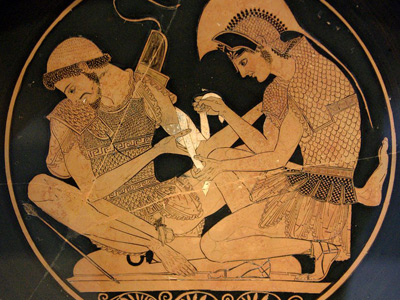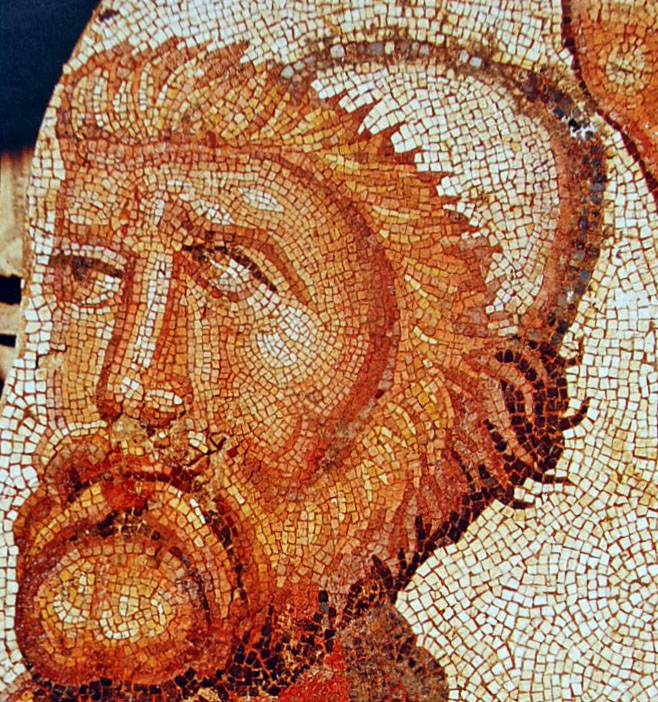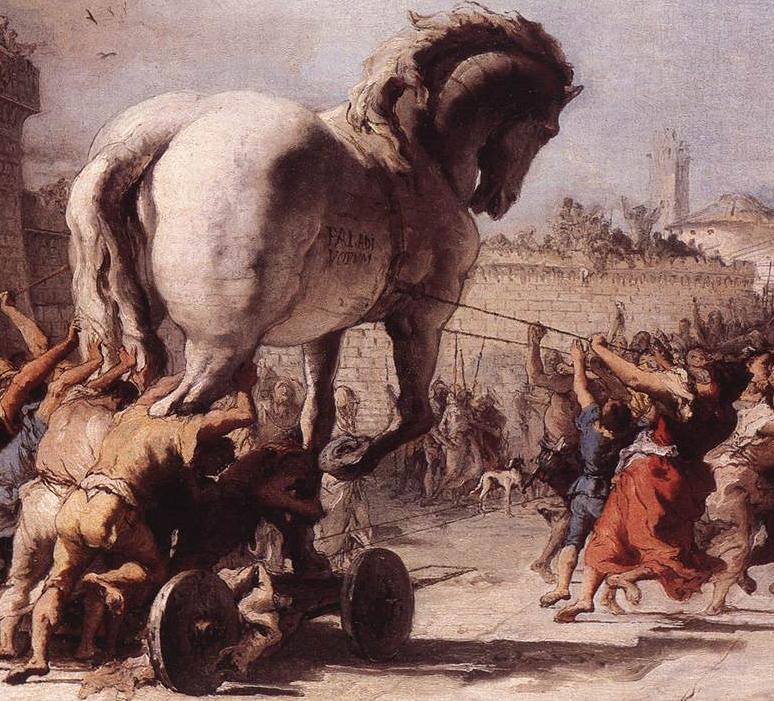Trojan War (1194–1184 BC)
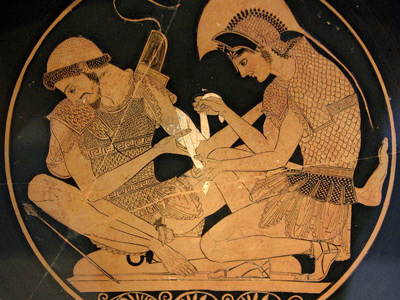
Iliad
Chryses, a priest of Apollo and father of Chryseis, came to Agamemnon to ask for the return of his daughter. Agamemnon refused, and insulted Chryses, who prayed to Apollo to avenge his ill-treatment. Enraged, Apollo afflicted the Achaean army with plague. Agamemnon was forced to return Chryseis to end the plague, and took Achilles' concubine Briseis as his own. Enraged at the dishonour Agamemnon had inflicted upon him, Achilles decided he would no longer fight. He asked his mother, Thetis, to intercede with Zeus, who agreed to give the Trojans success in the absence of Achilles, the best warrior of the Achaeans.

Achilles Slays Hector, by Peter Paul Rubens (1630–35)

Achilles Slays Hector, by Peter Paul Rubens (1630–35)
( Click image to enlarge)
After the withdrawal of Achilles, the Achaeans were initially successful. Both armies gathered in full for the first time since the landing. Menelaus and Paris fought a duel, which ended when Aphrodite snatched the beaten Paris from the field. With the truce broken, the armies began fighting again. Diomedes won great renown amongst the Achaeans, killing the Trojan hero Pandaros and nearly killing Aeneas, who was only saved by his mother, Aphrodite. With the assistance of Athena, Diomedes then wounded the gods Aphrodite and Ares. During the next days, however, the Trojans drove the Achaeans back to their camp and were stopped at the Achaean wall by Poseidon. The next day, though, with Zeus' help, the Trojans broke into the Achaean camp and were on the verge of setting fire to the Achaean ships. An earlier appeal to Achilles to return was rejected, but after Hector burned Protesilaus' ship, he allowed his close friend and relative Patroclus to go into battle wearing Achilles' armour and lead his army. Patroclus drove the Trojans all the way back to the walls of Troy, and was only prevented from storming the city by the intervention of Apollo. Patroclus was then killed by Hector, who took Achilles' armour from the body of Patroclus.

Triumphant Achilles dragging Hector's body around Troy, from a panoramic fresco of the Achilleion

Triumphant Achilles dragging Hector's body around Troy, from a panoramic fresco of the Achilleion
( Click image to enlarge)
Achilles, maddened with grief, swore to kill Hector in revenge. He was reconciled with Agamemnon and received Briseis back, untouched by Agamemnon. He received a new set of arms, forged by the god Hephaestus, and returned to the battlefield. He slaughtered many Trojans, and nearly killed Aeneas, who was saved by Poseidon. Achilles fought with the river god Scamander, and a battle of the gods followed. The Trojan army returned to the city, except for Hector, who remained outside the walls because he was tricked by Athena. Achilles killed Hector, and afterwards he dragged Hector's body from his chariot and refused to return the body to the Trojans for burial. The Achaeans then conducted funeral games for Patroclus. Afterwards, Priam came to Achilles' tent, guided by Hermes, and asked Achilles to return Hector's body. The armies made a temporary truce to allow the burial of the dead. The Iliad ends with the funeral of Hector.
HISTORY
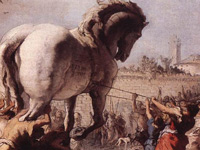
RESOURCES
This article uses material from the Wikipedia article "Trojan War", which is released under the Creative Commons Attribution-Share-Alike License 3.0.
© Stories Preschool. All Rights Reserved.
